 Estrella Media announced that it has launched a #SiSePuede (Yes We Can) community empowerment campaign for the U.S. Hispanic population aimed at inspiring hope and optimism during the current pandemic.
Estrella Media announced that it has launched a #SiSePuede (Yes We Can) community empowerment campaign for the U.S. Hispanic population aimed at inspiring hope and optimism during the current pandemic.
Health
Estrella Media Launches #SiSePuede
LET ME CLEAR MY THROAT!
 When this #Coronavirus thing is all over. And it will be over at some point. How about a novel idea. WHY DON’T WE BRING BACK THE F****** #CUBICLE!
When this #Coronavirus thing is all over. And it will be over at some point. How about a novel idea. WHY DON’T WE BRING BACK THE F****** #CUBICLE!
COVID-19 and the Hispanic Community: 6 Important Considerations
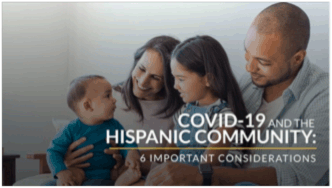 The U.S. Hispanic community faces enormous health disparities, from a lack of health insurance to a lack of trust in the healthcare system and much more. Today, given the unforeseen and unprecedented impact of the COVID-19 pandemic, the Hispanic community more than ever needs the support of organizations and brands, big and small, as we all continue to navigate the burgeoning COVID-19 crisis.
The U.S. Hispanic community faces enormous health disparities, from a lack of health insurance to a lack of trust in the healthcare system and much more. Today, given the unforeseen and unprecedented impact of the COVID-19 pandemic, the Hispanic community more than ever needs the support of organizations and brands, big and small, as we all continue to navigate the burgeoning COVID-19 crisis.
A “glass half full” look at social media
 With all of the uncertainty and change in our world, people can be forgiven for thinking most of the “news” is bad. And in truth, we Americans are angst ridden with multiple studies showing that we are more lonely, depressed, and generally exhausted (Substance Abuse and Mental Health Services Administration).
With all of the uncertainty and change in our world, people can be forgiven for thinking most of the “news” is bad. And in truth, we Americans are angst ridden with multiple studies showing that we are more lonely, depressed, and generally exhausted (Substance Abuse and Mental Health Services Administration).
World AIDS Day 2019 Ending the HIV/AIDS Epidemic: Community by Community
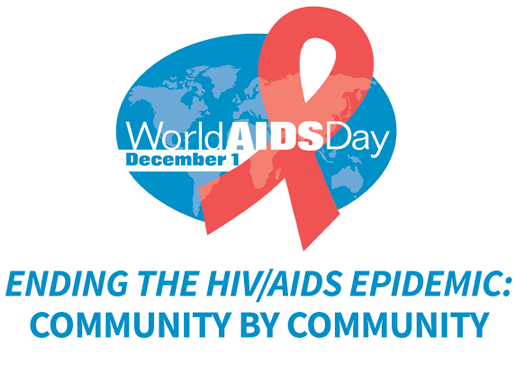 World AIDS Day (December 1) is a time to remember those we’ve lost to HIV/AIDS, celebrate our successes in saving and improving the lives of people living with HIV, and renew our commitment to ending the HIV epidemic in the United States and around the world.
World AIDS Day (December 1) is a time to remember those we’ve lost to HIV/AIDS, celebrate our successes in saving and improving the lives of people living with HIV, and renew our commitment to ending the HIV epidemic in the United States and around the world.
Gap in Resilience Skills in America
 Resilience is the “it” word of 2019. From the headlines and sound bites on the topic in political, sports, and celebrity news to the focus on health and wellness programs for employees, as well as self-care apps, resilience has entered the American lexicon as yet another personal wellness goal: to have more of it.
Resilience is the “it” word of 2019. From the headlines and sound bites on the topic in political, sports, and celebrity news to the focus on health and wellness programs for employees, as well as self-care apps, resilience has entered the American lexicon as yet another personal wellness goal: to have more of it.
St. Jude Children’s Research Hospital launches a new era of This Shirt Saves Lives campaign in Spanish
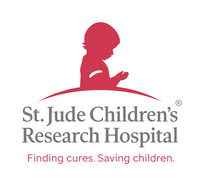 St. Jude Children’s Research Hospital announced the launch of the Spanish-language version of its widely popular This Shirt Saves Lives campaign at the Billboard Latin Power Players Summit Party in Los Angeles. Launching with Mexican-American singer, songwriter and actress Becky G, the new t-shirt, “Esta Camiseta Salva Vidas,” introduces a new era of the national campaign that inspired a mainstream movement to support the lifesaving work of St. Jude: Finding cures. Saving children.
St. Jude Children’s Research Hospital announced the launch of the Spanish-language version of its widely popular This Shirt Saves Lives campaign at the Billboard Latin Power Players Summit Party in Los Angeles. Launching with Mexican-American singer, songwriter and actress Becky G, the new t-shirt, “Esta Camiseta Salva Vidas,” introduces a new era of the national campaign that inspired a mainstream movement to support the lifesaving work of St. Jude: Finding cures. Saving children.
NBCUniversal Telemundo Enterprises launches “EXATLÓN CHALLENGE”
 NBCUniversal Telemundo Enterprises announced the launch of “Exatlón Challenge,” a health and wellness multi-platform initiative presented by “El Poder En Ti,” the company’s award-winning corporate social responsibility platform aimed at empowering the Latino community.
NBCUniversal Telemundo Enterprises announced the launch of “Exatlón Challenge,” a health and wellness multi-platform initiative presented by “El Poder En Ti,” the company’s award-winning corporate social responsibility platform aimed at empowering the Latino community.
Food-Related Ads Targeting Black and Hispanic Youth Almost Exclusively Promote Unhealthy Food and Drinks [REPORT]
 The new report finds that fast food, candy, sugary drinks, and unhealthy snacks represented 86 percent of food ad spending on Black-targeted TV programming, where Black consumers comprise the majority of viewers, and 82 percent of ad spending on Spanish-language TV, in 2017. According to researchers, food companies spent almost $11 billion in total TV advertising in 2017, including $1.1 billion on advertising in Black-targeted and Spanish-language TV programming.
The new report finds that fast food, candy, sugary drinks, and unhealthy snacks represented 86 percent of food ad spending on Black-targeted TV programming, where Black consumers comprise the majority of viewers, and 82 percent of ad spending on Spanish-language TV, in 2017. According to researchers, food companies spent almost $11 billion in total TV advertising in 2017, including $1.1 billion on advertising in Black-targeted and Spanish-language TV programming.
Top health industry issues of 2019 [REPORT]
 The US health industry has often lagged other industries when it comes to modernizing. Once thought to operate outside the greater US economy, the industry—with its byzantine payment system, complicated regulatory barriers and reliance on face-to-face interactions—is being disrupted.
The US health industry has often lagged other industries when it comes to modernizing. Once thought to operate outside the greater US economy, the industry—with its byzantine payment system, complicated regulatory barriers and reliance on face-to-face interactions—is being disrupted.
Assessing US Kids as Digital Overusers
![]() Kids continue to be an anomaly of the digital era. While few have smartphones or inhabit the social networks that preoccupy teens and adults, their sheer amount of screen time nonetheless manages to feel like a national crisis.
Kids continue to be an anomaly of the digital era. While few have smartphones or inhabit the social networks that preoccupy teens and adults, their sheer amount of screen time nonetheless manages to feel like a national crisis.
Link Between Race, Where You Live and Health in America
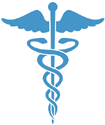 There are clear links between race, ethnicity, geography and drivers of health outcomes in the U.S., a special report from U.S. News & World Report finds.
There are clear links between race, ethnicity, geography and drivers of health outcomes in the U.S., a special report from U.S. News & World Report finds.
Inside the Disconnect Between Pharma Marketers And Boomers
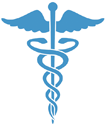 Direct-to-consumer (DTC) pharma marketing used to be simple: Run a TV spot on news or late-night talk shows and wait for consumers to contact their doctors.
Direct-to-consumer (DTC) pharma marketing used to be simple: Run a TV spot on news or late-night talk shows and wait for consumers to contact their doctors.
MedicosTV launches
 As health and wellness becomes one of the greatest concerns for nearly all segments of the population, MedicosTV has launched a multifaceted delivery platform for a new channel providing relevant health-related programming aimed at Spanish-speaking Hispanic audiences everywhere.
As health and wellness becomes one of the greatest concerns for nearly all segments of the population, MedicosTV has launched a multifaceted delivery platform for a new channel providing relevant health-related programming aimed at Spanish-speaking Hispanic audiences everywhere.
The New Health Economy in the age of disruption [REPORT]
 The US health industry is in a period of unprecedented dealmaking. New business models are emerging from unexpected sources. These models, a mix of new entrants and traditional players, are coming together to offer new capabilities and models of care. Their arrival in the industry should prompt players new and old to reconsider their business models and their strategies or risk being left behind.
The US health industry is in a period of unprecedented dealmaking. New business models are emerging from unexpected sources. These models, a mix of new entrants and traditional players, are coming together to offer new capabilities and models of care. Their arrival in the industry should prompt players new and old to reconsider their business models and their strategies or risk being left behind.
Loneliness at Epidemic Levels in America
 Cigna released results from a national survey exploring the impact of loneliness in the United States. The survey, conducted in partnership with market research firm, Ipsos, revealed that most American adults are considered lonely.
Cigna released results from a national survey exploring the impact of loneliness in the United States. The survey, conducted in partnership with market research firm, Ipsos, revealed that most American adults are considered lonely.
DTC Saves Lives: The Hispanic Opportunity
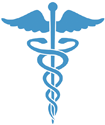 Recent studies have highlighted a growing opportunity to increase DTC activity and potentially save many more lives among U.S. Hispanics.
Recent studies have highlighted a growing opportunity to increase DTC activity and potentially save many more lives among U.S. Hispanics.
Improving Hispanic Patient Outcomes Via Consistent Messaging
 The brand team for Genentech’s Nutropininjectable human growth hormone was mystified. One-third of all prescriptions was for Hispanic children but non-Hispanic children had better, more consistent outcomes. by Beatriz Mallory
The brand team for Genentech’s Nutropininjectable human growth hormone was mystified. One-third of all prescriptions was for Hispanic children but non-Hispanic children had better, more consistent outcomes. by Beatriz Mallory
Innovators in the Digital Health Space [PODCAST]
![]() In the latest episode of eMarketer’s “Behind the Numbers” podcast, we continue our conversation about digital health initiatives, looking at some of the innovative services and devices that tech companies are working on to improve healthcare.
In the latest episode of eMarketer’s “Behind the Numbers” podcast, we continue our conversation about digital health initiatives, looking at some of the innovative services and devices that tech companies are working on to improve healthcare.
Republica’s “Broken Crayons” captures Miami Art Week
![]() Republica partnered with non-profit organization, Amigos For Kids, to create a powerful PSA aimed at raising awareness about the subtle signs of child abuse that, tragically, often go unnoticed. Inspired by the insight that abused children often hide subconscious clues of their situations in classroom drawings, Amigos for Kids created a gallery with a dark, hidden twist during Miami Art Week.
Republica partnered with non-profit organization, Amigos For Kids, to create a powerful PSA aimed at raising awareness about the subtle signs of child abuse that, tragically, often go unnoticed. Inspired by the insight that abused children often hide subconscious clues of their situations in classroom drawings, Amigos for Kids created a gallery with a dark, hidden twist during Miami Art Week.


























